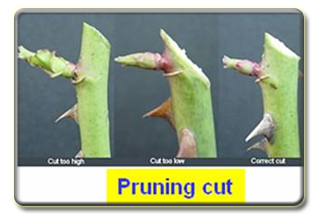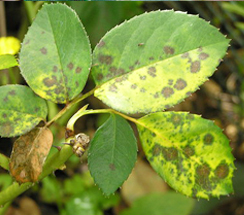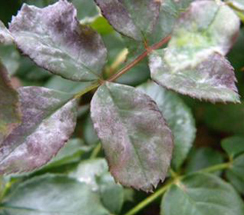1.Species roses:
3.Banksiae:
4.Eglanteria:
5.Foetida
6.Moyesh: Native of china, bears red rose.
7.Multiflora:
Musk, Setigera, Sempervirens, Soulieana
8.Old Garden Rose:
9.Alba: Light pink to white color flowers.
10.Bourbon: Light pink to deep pinkish red flowers.
11.Boursault:
12.Centifolia:
13.Damask:
14.Hybrid Perpetual:
15.Macrantha:
16.Moss:
17.Noisette: Scented flowers with shades of pink.
18.Modern Roses:
Example: Hybrid tea roses, Floribunda roses, yellow permet rose, Grandiflora Roses, American Pillar, Grandifloras, Albas, Landscape Rose, Centifolia rose , mini flora, Hybrid Musk and Polyantha.
19.Hybrid tea:
20.Floribunda:
21.Shrub Rose:
e.g : Bonica, Frau Dogmar Hartopp, Abraham Darby, Golden Wings etc.
22.Climbing rose:
23.Miniature Roses:
24.Grandifloras:
25.Standard or Tree Rose
26.Flower Carpet:
e.g Scarlet, Amber and Pink Supreme.
Commercial Varieties: Pusa Gaurav (Pink varieties), Super Star, Montezuma, Mercedies, Pusa Priya and First Red (red varieties)
Exhibition varieties: First Prize, Eiffel Tower, Pusa Sonia, Red- Christian Dior, Montezuma, Super Star.
Scented varieties: Crimson Glory, La France, Sugandha
Other Varieties: Vivaldi, Sika, Arusumo, Proudland, Summer Fragerance, Gen Vaidya, Kalpana, Mother and Baby, Soller, Night N Day, American Home, Melina, Jogan, Amacia, Montreal, Grandmaster Piece, Pilgrim, MME Teresa Estabing, Golden Jubilee, Papa Pirosa, Chimson Tide, Belami, Elegant Beauty, Pampa, Madelon, Perfect Moment, Rocklea, Hebe Kuborgo, Polarstern, Fulton Mackay, Sweet Surrender, summer dream, Lapdef, Madosh, Dreaming, Pastel Delight, Godavari, Rosenrot, Fragerance Lady, Execiting, Roundalay, City kenda, Jessie Mathews, Portland Thail Blazer, Banco, Dame Décor, Mirandi, Lucy Cromphorn, Jean Gaujard, Krithika, Austin Reed, Tynwald, Leg glow, Emily Post, Alaska Centennial, Bacardy, Touch of Glass, Jayalalitha, Dolly Parton, MME Denise Galloise, Chaitra, Royal Amathyst, Chalis Gold, MME President, Ashwini, Command Performance, Agena, Alinka, Alliance, Alpha, Ariane, Bella Epoque, Bellease, Besancon, Blessings, Blue Monday, Bridal Bush, Bridal Dream, Brinessa, Cabaret, Cacico
Soil –
Climate-
The ideal climate for rose growing should have temperature with a minimum of 15°C and maximum of 28°C.
Time of sowing
Seed Rate
In green house, rose are planted in 2 rows and density should be 7-14 plants/m2.
Nutrient Requirement (gm/plant)
| NITROGEN | PHOSPHORUS | POTASH |
| 8 | 8 | 16 |
To control monocot weeds, use Glyphosate@300 g/acre and for dicot weeds, apply Oxyfluorfen@200 g/acre as pre-emergent treatment.
The best time of pruning is the period when the activity of rose plant is least and the plant is dormant to near dormant stage.
Pruning time will depend on climatic conditions of the particular region.
The vigorous past season shoots are cut back to half the length.
All the weak, diseased, criss-crossing and unproductive shoots are removed.
The cut ends should be protected with Bordeaux or Fytolan paste + Carbaryl 50 WP.
Cut back the vigorous past season shoots to half the length during October to December.
All the weak, diseased, criss-crossing and unproductive shoots are removed.
The cut ends should be protected with Bordeaux paste or Copper Oxychloride + Carbaryl 50 WP.

1.Rose aphid: Macrosiphum rosaeformis D.
Symptoms of damage
Management
2. Thrips: Rhipiphorothrips cruentatus
Symptoms of damage
Management
3.Scale: Lindingaspis rossi
Symptoms of damage
Management
4.Red spider mite: Tetranychus cinnabarinus, T. urticae
Symptoms of damage
Management
5.Leaf cutter bee: Megachile anthracina
Symptoms of damage
Management
6.Castor semilooper: Achaea janata L.
Symptoms of damage
Management
7.Slug caterpillar: Parasa (Latoia) lepida
Symptom of damage
Management
8.Gram caterpillar: Helicoverpa armigera Hub.
Symptoms of damage
Management
9.Flower Chaffer beetle: Oxycetonia versicolor
Symptoms of damage
Management
10.Termite (White ants): Odontotermes obesus
Symptoms of damage
Management
11.Blackfly: Aleurocanthus spiniferus
Symptoms of damage
Management
1.Phosphorus |
| Deficiency Symptoms |
|
| Correction Measure |
Application of super phosphate was very effective to control the deficiency. |
2.Potassium
|
| Deficiency Symptoms |
Symptom first visible on older leaves as marginal chlorosis and become necrotic drying form tip towards base. |
| Correction Measure |
Foliar spray K2SO4 1% at fortnightly intervals. |
3.Magnesium |
| Deficiency Symptoms |
Symptoms seen in old leaves; occurrence of interveinal chlorosis |
| Correction Measure |
Foliar spray of MgSO4@1% |
1.Black spot: Diplocarbon rosae

Symptoms
Management
2.Powdery mildew: Sphaerotheca pannosa


Symptoms:
Management:

Symptoms:
Management:
4.Rust: Phragmidum mucronatum

Symptoms:
Management:
7.5 t/ha/year.
Crop growing districts Krishnagiri,Madurai,Dindigul
Major markets in Tamil Nadu Dindigul, Madurai, Chennai
Preferred varieties and hybrids Edward rose, Andra Red rose and Button rose
